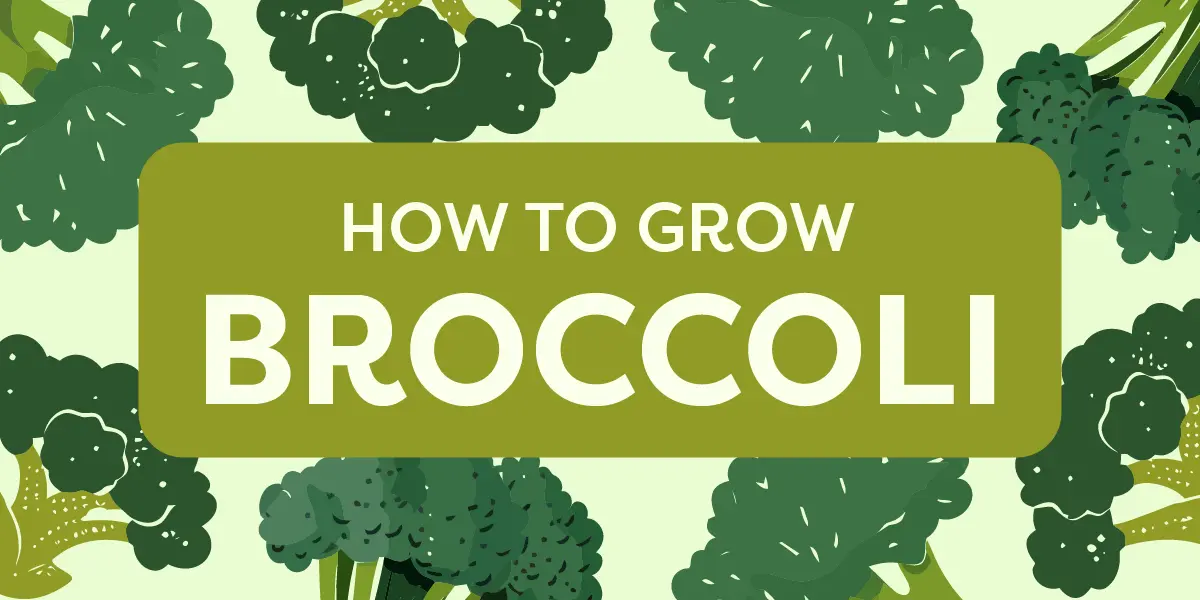Growing your own vegetables has become a thing. It’s easy to see why.
- Homegrown vegetables are picked at their peak ripeness, ensuring superior flavor and nutrients.
- You control the use of pesticides and fertilizers, resulting in healthier produce.
- You save beaucoup bucks on groceries.
- Planting, nurturing, and harvesting produce connects you to nature.
BROCCOLI stands out among veggies as an all-caps nutritional superstar. It’s packed with vitamins C and K, fiber, and antioxidants, and is a must-have for any health-conscious diet.
A Brief History of Broccoli
Broccoli originated along the northern and western coasts of the Mediterranean, specifically in Italy. It’s a cultivar of wild cabbage.
It has been cultivated for centuries, dating to the Roman Empire. Italian immigrants introduced broccoli to the United States in the 19th century.
The plant belongs to the Brassicaceae family (crucifers), which includes cabbage, cauliflower, and Brussels sprouts. It’s classified as a cool-season crop, meaning it does best in cooler temperatures and is usually grown in the fall or spring.
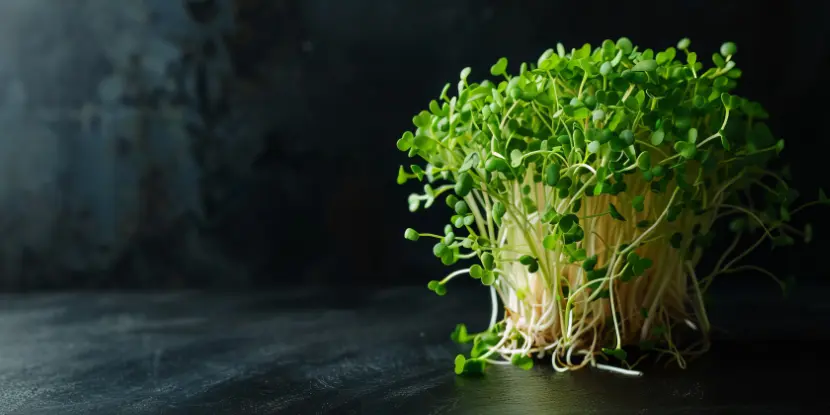
You can always sprout broccoli seeds if you lack garden space.
Why Home-Grown Broccoli Is Better
Growing broccoli at home can enhance its sweetness and reduce bitterness compared to store-bought alternatives.
- Home gardeners can pick broccoli heads when most tender and packed with natural sugars.
- Managing soil quality and moisture levels can significantly influence taste — healthy soil rich in organic matter encourages sweeter flavors.
- Limiting stress conditions can reduce bitterness and produce a more palatable crop.
Choosing the Right Variety
Broccoli has summer and winter varieties with different maturity dates:
- Summer varieties are fast-growing and typically mature within 50-60 days after planting. They thrive in warmer temperatures but will bolt (go to seed) if exposed to extreme heat.
- Winter varieties have a longer maturity date, ranging from 80-100 days after planting. They can withstand colder temperatures but need to be planted early enough in the fall to have enough time to mature before winter frost sets in.
Broccoli Varieties for Southern California
Southern California’s mild winters and warm springs are well-suited for broccoli cultivation. Some excellent varieties include:
- Calabrese: A popular variety known for its large heads and side shoots.
- De Cicco: An Italian heirloom with small heads and many side shoots, ideal for continuous harvest.
- Purple Sprouting: A unique variety with purple florets, perfect for cooler weather.
Consider your garden’s location and microclimate. Some varieties may do better in certain areas or conditions.
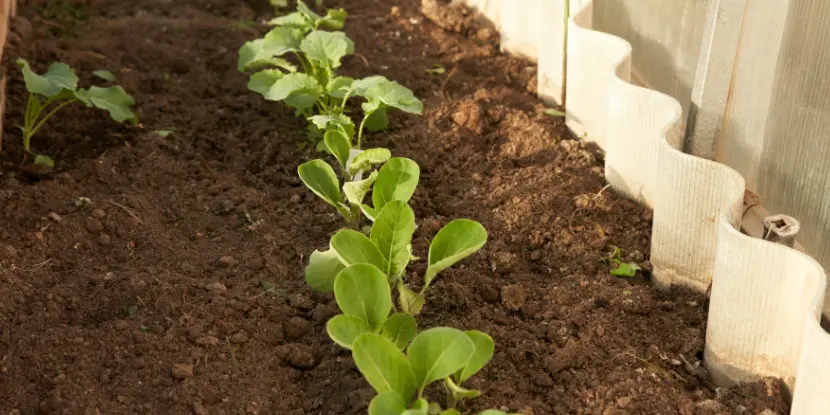
Newly transplanted broccoli and cauliflower seedlings.
Preparing Your Garden
Broccoli loves the sun! Pick a spot in your garden with at least 6–8 hours of sunlight daily. But Southern California’s summer sun can be intense, so a little afternoon shade can protect your plants from wilting.
Soil Preparation
Getting the soil right is crucial for growing healthy broccoli.
- Broccoli prefers slightly acidic soil with a pH between 6.0 and 7.0. You can buy a soil test kit online or at your local garden center.
- Lower pH by incorporating elemental sulfur or aluminum sulfate into the soil.
- Raise the pH with agricultural lime (calcium carbonate), which also enriches the soil.
- Mix in plenty of organic matter like compost or well-rotted manure. This will improve soil fertility and drainage.
- Broccoli is a heavy feeder. To give your plants a good start, incorporate a balanced nitrogen, phosphorus, and potassium-rich fertilizer.
Planting Broccoli
When to Plant
In Southern California, you can plant broccoli in late summer for a fall harvest or in early spring for a late spring harvest. Starting seeds indoors 6–8 weeks before the last frost date will give you a jump on the season.
Planting Seeds or Transplants
- Seeds: Sow seeds about 1/2 inch deep in seed trays. Once seedlings are 3 inches tall, transplant them into the garden, spacing them about 18 inches apart.
- Transplants: If you’re using nursery-bought transplants, plant them at the same depth they were growing in their pots and water them thoroughly after planting.
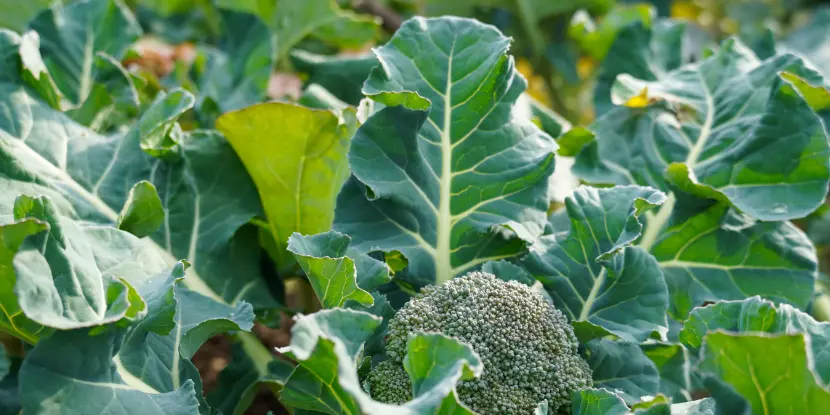
A head of broccoli forming among the foliage.
Caring for Broccoli Plants
Watering Tips
- Broccoli needs consistent moisture, especially during the head formation stage.
- Water deeply once or twice a week, keeping the soil moist but not waterlogged.
- Mulching around the plants can help retain moisture and keep the roots cool.
Fertilizing Schedule
Feed your broccoli plants with a balanced fertilizer every 3–4 weeks. This will give them the nutrients they need to produce large, healthy heads.
Pest & Disease Management
Watch for common broccoli pests like aphids, cabbage worms, and flea beetles.
- Aphids: Spray plants with a strong jet of water or use insecticidal soap.
- Cabbage Worms: Handpick them off the plants or use a biological control like Bacillus thuringiensis (Bt).
- Flea Beetles: Use row covers to protect young plants and apply diatomaceous earth around the base of plants.
For diseases, rotate your crops yearly and avoid planting broccoli where other Brassica have grown recently. This reduces the risk of soil-borne diseases like clubroot.
Harvesting Broccoli
- Broccoli is ready to harvest when the heads are firm and tight, usually 60–100 days after planting, depending on the variety.
- Harvest the central head before it starts to flower.
- Cutting the main head encourages the plant to produce side shoots for a prolonged harvest.
- Use a sharp knife to cut the head off the plant, leaving about 6 inches of stem.
- Harvest in the morning when the plant is hydrated for the best flavor.
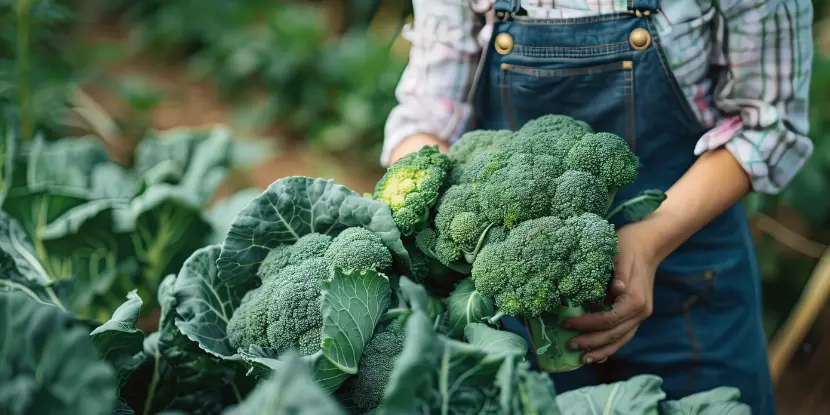
Health heads of broccoli ready for harvest.
FAQs: More about Growing Broccoli
Q: How do I know if my broccoli is bolting?
Bolting occurs when broccoli starts to flower and set seed prematurely, often due to heat stress. You’ll notice the heads becoming loose and yellow flowers beginning to appear. To prevent bolting, provide shade during hot weather and ensure consistent watering.
Q: How long does it take to grow broccoli?
Growing broccoli in Southern California takes about 55 to 100 days from transplanting to harvest, depending on the variety and growing conditions. Some hybrids, like the Bonanza Hybrid, can be ready to harvest in as few as 55 days. However, planting times are crucial to success. Broccoli should be planted in the cooler months, from late September through December, to avoid issues with heat, which can curb growth and head formation.
Q: Can I grow broccoli in a pot?
Yes, if you choose a pot that’s large enough (at least 12 inches deep) and ensure good drainage. Use a high-quality potting mix and water regularly.
Q: How much room does broccoli need to grow?
- Between Plants: 18 to 24 inches apart.
- Between Rows: 24 to 36 inches apart. This gives you space to move between the rows for watering, weeding, and harvesting.
- In Pots: Ensure each broccoli plant has a container that gives it enough space to grow, typically around 12–18 inches wide and deep per plant
Q: How can I store freshly harvested broccoli?
Store your harvested broccoli in the refrigerator, unwashed, in a perforated plastic bag. It will stay fresh for up to a week. For more extended storage, blanch the broccoli and freeze it.
Q: What’s the best way to prevent pests in my broccoli garden?
Regularly inspect your plants for signs of pest infestations and maintain good garden hygiene by removing any debris. Encourage beneficial insects like ladybugs and lacewings, which prey on harmful pests. You can also use natural deterrents like neem oil or insecticidal soap to keep pests at bay.
Q: How can I increase the yield of my broccoli plants?
Ensure your plants receive adequate sunlight, consistent watering, and regular fertilization. Practicing crop rotation and planting companion plants like dill or mint can improve soil health and deter pests, leading to better yields.
Q: What should I do if my broccoli heads are small?
Small broccoli heads can result from insufficient nutrients, water stress, or poor growing conditions. Ensure your plants receive balanced fertilization, consistent moisture, and enough sunlight. Consider thinning out overcrowded plants to allow more room for growth.
Q: Can I grow broccoli from store-bought broccoli stems?
Yes, you can attempt to grow broccoli from the stems of store-bought broccoli by placing the cut end in water. After a few days, roots may start to develop. Once roots are established, transfer the cutting to soil and treat it like a regular transplant.
Q: How do I know if the broccoli has gone bad?
Fresh broccoli should be firm, with tightly closed florets and a deep green color. If it’s wilting, has yellowed florets, or emits a foul smell, it has likely gone bad and should be discarded.

